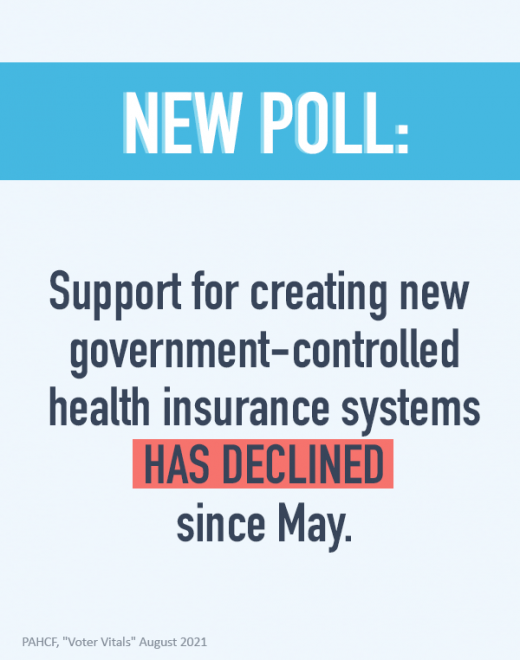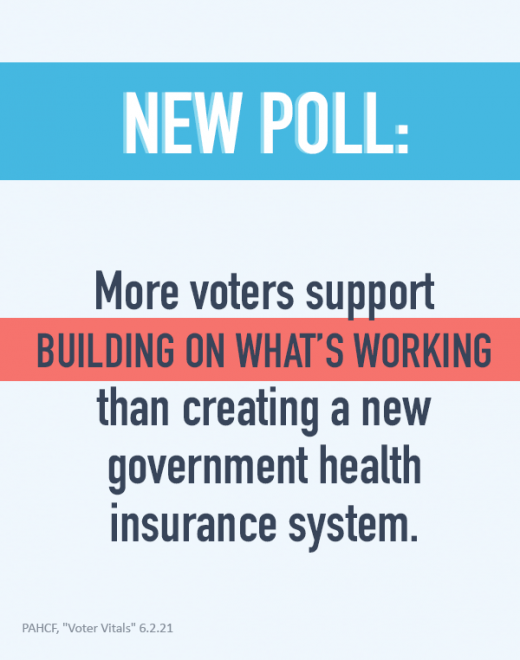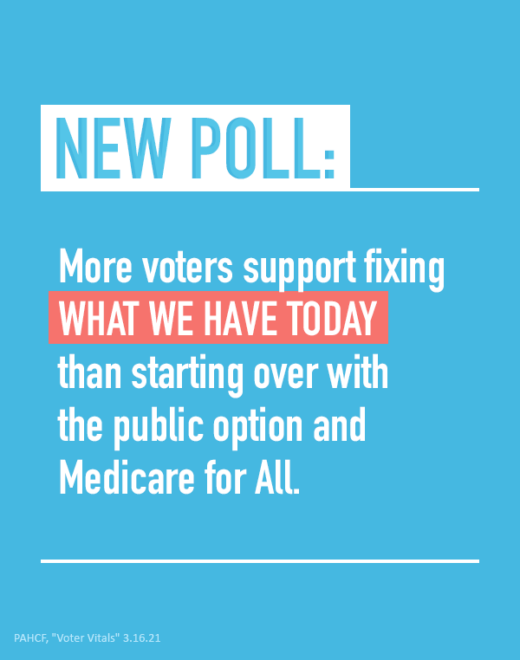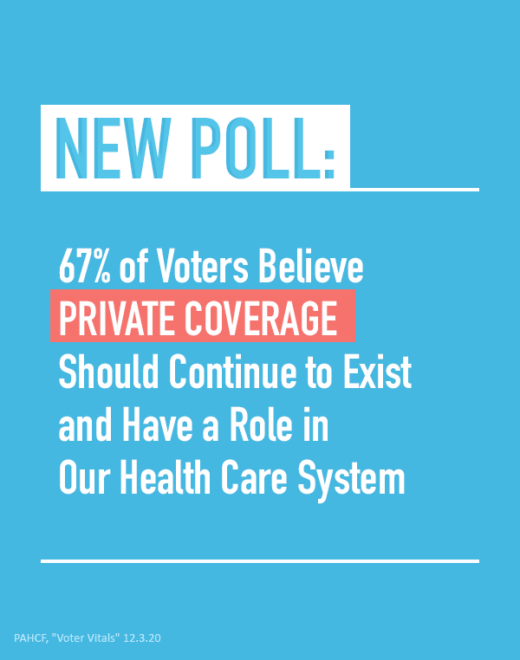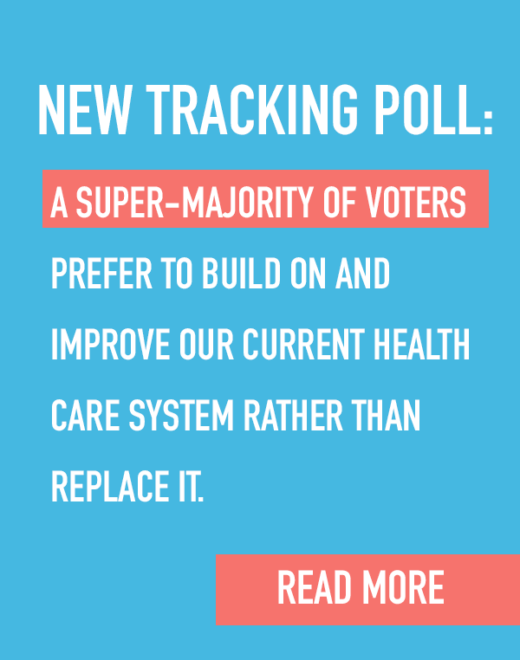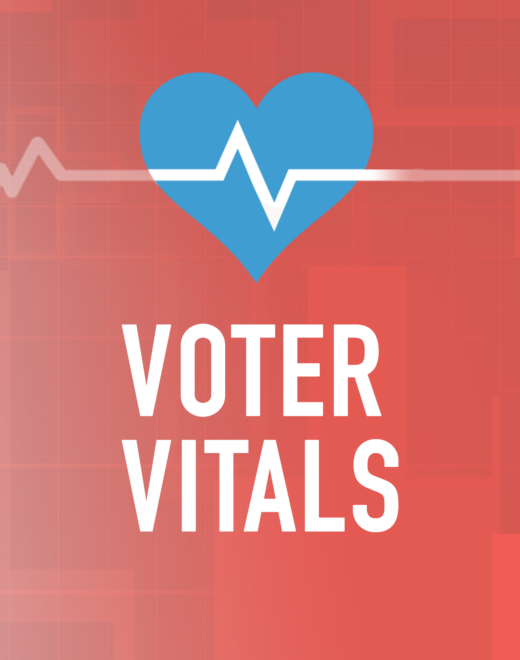Medicare for All is a one-size-fits-all new government health insurance system that would force every American to pay more to wait longer for worse care. It would dramatically increase taxes on every American family – more than doubling your income taxes, while limiting access to care and putting politicians in control of your health care.
What Is Medicare For All?
Medicare for All would replace private health coverage with a one-size-fits-all government health insurance system that covers all Americans and is funded by federal taxes.
What Does That Mean For Me And My Family?
American families would pay more to wait longer for worse care:
- Medicare for All “could have a significant negative impact on the adequacy of the country’s health care workforce, access to care, and, ultimately, patient outcomes.” (FTI Consulting, 1/10/20)
- “Demand for care might be unmet” under a one-size-fits-all government health insurance system. (Congressional Budget Office, 12/20/19)
- It will take away the choice and control millions of Americans enjoy under our current health care system, where the free market and government programs work together to provide high-quality health care to more Americans than ever before.
(S.1129 – Medicare for All Act of 2019) - It could force Americans off their current plan and into a one-size-fits-all government health insurance system run by politicians.
(S.1129 – Medicare for All Act of 2019) - Under a one-size-fits-all government health insurance system, patients are likely to see longer wait times and a lower quality of care.
(Congressional Budget Office, 5/1/19) - And American families would have to pay more than double in income taxes to fund this $32 trillion system over a decade.
(Committee For A Responsible Federal Budget, 10/28/19)
What They Are Saying:
American families will pay more….
- Medicare for All would “significantly increase federal spending,” and “[t]axes on high earners and corporations alone could not finance Medicare for All.” (Committee for a Responsible Federal Budget, 3/17/20)
- “Medicare for All is likely to increase federal costs by between $25 trillion and $35 trillion over ten years … To finance $30 trillion – a rough midpoint – policymakers would likely adopt a combination of approaches that are equivalent to a 32 percent payroll tax, 25 percent income surtax, 42 percent value-added tax (VAT), a $7,500 per capita mandatory public premium, doubling all income tax rates, reducing non-health spending by 80 percent, or increasing debt 105 percent of GDP.” (Committee for a Responsible Federal Budget, 3/17/20)
- “Medicare for All would be an enormous expansion of government spending, and would almost certainly require large tax increases.” (Margot Sanger-Katz, “The Basics of ‘Medicare for All,’” The New York Times, 2/25/20)
- Analysis from Penn Wharton reveals that Medicare for All “could decimate the economy,” the Washington Examiner reports. According to the new analysis, Medicare for All “could reduce commerce by as much as a quarter over time.” (Cassidy Morrison, “Sanders ‘Medicare for all’ would boost health but could decimate economy: Analysis,” Washington Examiner, 1/30/20)
- A “study by the left-leaning Urban Institute, for example, found that total health care spending in the U.S. would increase by $7 trillion over a decade under a Medicare for All-like single-payer plan, even making allowances for savings from lower prices and administrative costs,” Reason reports.
- An analysis by the nonpartisan Committee for a Responsible Federal Budget (CRFB) outlined some of the proposed tax increases to finance the new government health insurance system, including “a 32 percent payroll tax, a 25 percent surtax on income above the standard-deduction amount, a 42 percent value-added tax, mandatory premiums averaging $7,500 per capita, and more than doubling all individual and corporate tax rates. The group estimated that Medicare for All could not be fully financed just by raising taxes on the wealthy.”
(Naomi Jagoda, “Budget watchdog group outlines ‘Medicare for All’ financing options” The Hill, 10/28/19) - “Tax experts … say that you can’t raise enough money from taxing the rich and that the levies on all Americans may exceed the savings for more people …. This may be particularly true of low-income folks.” (Tami Luhby, “Can taxing the rich pay for Bernie Sanders’ Medicare for All plan?” CNN, 4/16/19)
- “According to a study from the Urban Institute, Medicare-for-all would still add $32.6 trillion to national health spending over 10 years. The study goes on to state that Sanders’s proposed tax increase would be insufficient and that additional revenue would be needed.” (Atthar Mirza, “Would Bernie Sanders’s Medicare-for-all save Americans money?” The Washington Post, 6/3/19)
- CRFB’s Marc Goldwein: “There’s no possible way to finance [Medicare for all] without big middle class tax increases.” (Jeff Stein, “Democrats’ 2020 policy proposals almost certainly require middle-class tax hikes,” The Washington Post, 3/28/19)
- CRFB also finds that even a low-end estimate of $30 trillion over a decade “would mean increasing federal spending by about 60 percent (excluding interest)” and “require the equivalent of tripling payroll taxes or more than doubling all other taxes.”
- The New York Times editorial board acknowledged that “[i]n Vermont and Colorado, legislators dropped bids for a state-run single-payer system when it became clear that people would not support the tax increases needed to sustain such a program.”
- Vermont’s Democratic governor admitted that the 11.5 percent payroll tax and 9.5 percent income tax that were proposed to finance the system were too much for taxpayers to accept: “‘The biggest problem was money,’ Shumlin said at Harvard. And he couldn’t promise lawmakers that they wouldn’t need to hike taxes again later to accommodate rising health care costs.” (Lauren Clason, “Single-Payer Health Care Systems Are No Easier In The States,” Roll Call, 3/29/19)
- Democratic New York Governor Andrew Cuomo said “no sane person will pass it,” and “you’d double everybody’s taxes” to pay for it. (Edward-Isaac Dovere, “Andrew Cuomo’s Case For 2020—No, Really,” The Atlantic, 3/3/19)
… to wait longer …
- Medicare for All could put the jobs of over 1.2 million Americans in the health care workforce at risk. This decrease in the health care workforce could have severe impacts on access to care for patients across the nation. (FTI Consulting, 1/10/20)
- CBO: “patients might face increased wait times and reduced access to care,” and such a system “could also reduce the quality of care,” while “[t]he number of hospitals and other health care facilities might also decline as a result of closures, and there might be less investment in new and existing facilities.” (“Key Design Components And Considerations For Establishing A Single-Payer Health Care System,” Congressional Budget Office, 5/1/19)
- Experts are growing increasingly worried about the “violent upheaval” a Medicare for all system would cause hospitals, cautioning: “Some hospitals, especially struggling rural centers, would close virtually overnight, according to policy experts. Others, they say, would try to offset the steep cuts by laying off hundreds of thousands of workers and abandoning lower-paying services like mental health.” (Reed Abelson, “Hospitals Stand to Lose Billions Under ‘Medicare for All,’” The New York Times, 9/23/19)
… for worse care.
- Reimbursing all hospitals at Medicare rates could drop revenue by roughly 35%, putting particularly rural facilities at further risk of closure and jeopardizing the care Americans rely on. (Health Affairs, 5/20)
- A study from the University of Massachusetts Political Economy Research Institute (PERI), shows that “1.8 million health care jobs nationwide would no longer be needed if Medicare for All became law, upending health insurance companies and thousands of middle class workers whose jobs largely deal with them, including insurance brokers, medical billing workers and other administrative employees,” POLITICO reports. “Nearly 92 percent of these jobs are held by women, and over a third are held by people of color. And over 80 percent of these workers have less than a four year degree,” The Week adds.
- “[P]roviders warn [Medicare for all] could significantly hurt their ability to provide adequate, widespread care. A recent report from the Congressional Budget Office [(CBO)] reinforces this concern: ‘Such a reduction in provider payment rates would probably reduce the amount of care supplied and could also reduce the quality of care.’” (Atthar Mirza, “Would Bernie Sanders’s Medicare-For-All Save Americans Money ” The Washington Post, 6/3/19)
- CBO: “patients might face increased wait times and reduced access to care,” and such a system “could also reduce the quality of care,” while “[t]he number of hospitals and other health care facilities might also decline as a result of closures, and there might be less investment in new and existing facilities.” (“Key Design Components And Considerations For Establishing A Single-Payer HealthCare System,” Congressional Budget Office, 5/1/19)
- Experts are growing increasingly worried about the “violent upheaval” a Medicare for all system would cause hospitals, cautioning: “Some hospitals, especially struggling rural centers, would close virtually overnight, according to policy experts. Others, they say, would try to offset the steep cuts by laying off hundreds of thousands of workers and abandoning lower-paying services like mental health.” (Reed Abelson, “Hospitals Stand to Lose Billions Under ‘Medicare for All,’” The New York Times, 9/23/19)
- CBO: “patients might face increased wait times and reduced access to care,” and such a system “could also reduce the quality of care,” while “[t]he number of hospitals and other health care facilities might also decline as a result of closures, and there might be less investment in new and existing facilities.” (“Key Design Components And Considerations For Establishing A Single-Payer HealthCare System,” Congressional Budget Office, 5/1/19)
- Medicare for All “would all but end private insurance and regulate hospitals in a vastly different way, dramatically changing operators’ business model and costing community hospitals as much as $151 billion a year, according to one estimate published in JAMA,” all while “slashing hospitals’ pay rates and putting up to 1.5 million jobs at stake.” (Adam Cancryn, “’Medicare For All’ Backers Find Biggest Foe In Their Own Backyard,” POLITICO, 5/25/19)
Videos
Key Numbers
DOUBLE
That’s the amount Americans would have to pay in higher income taxes in order to pay for Medicare for all.
$32 TRILLION
The price tag of some proposals that threaten to impose a one-size-fits-all new government health insurance system on American families.
-44%
how low net support for Medicare for All drops once Americans learn more details about how it would work.










